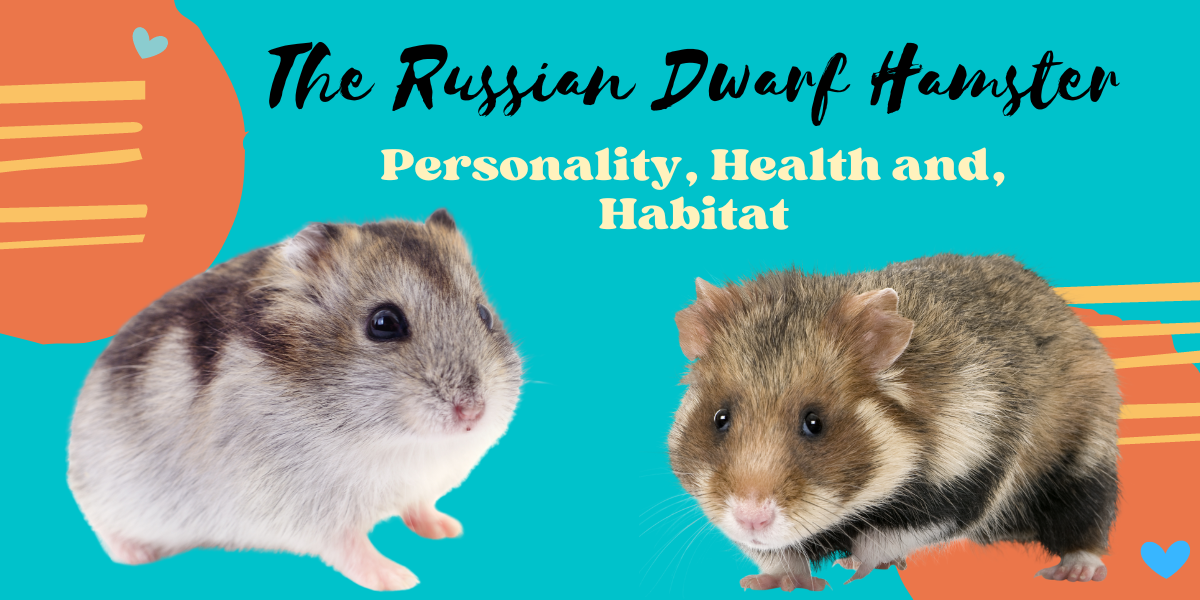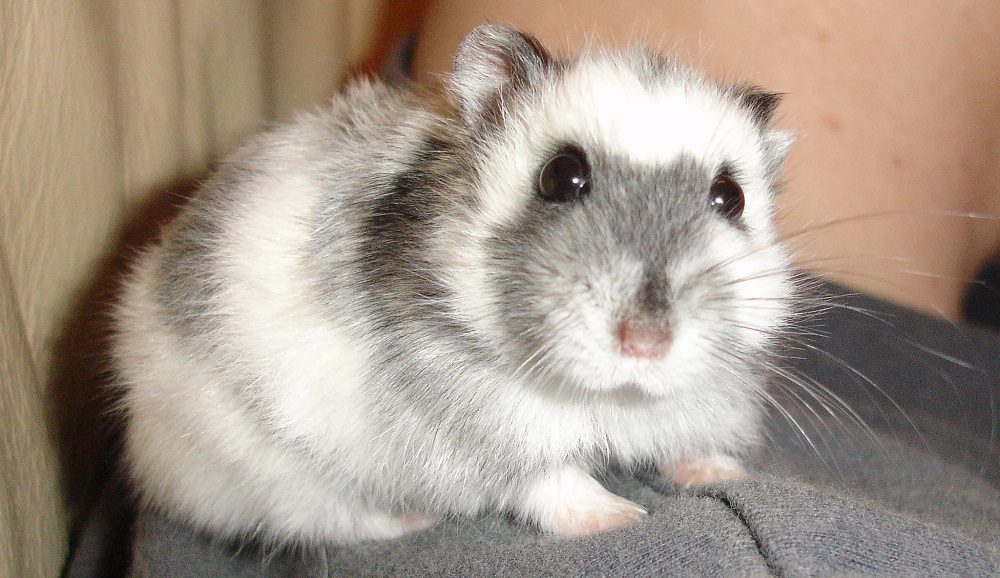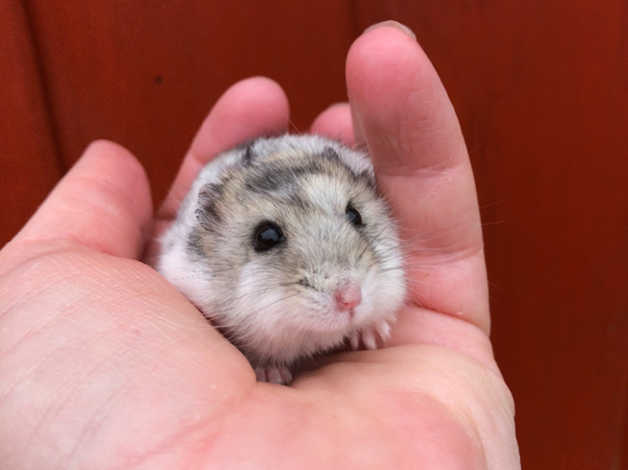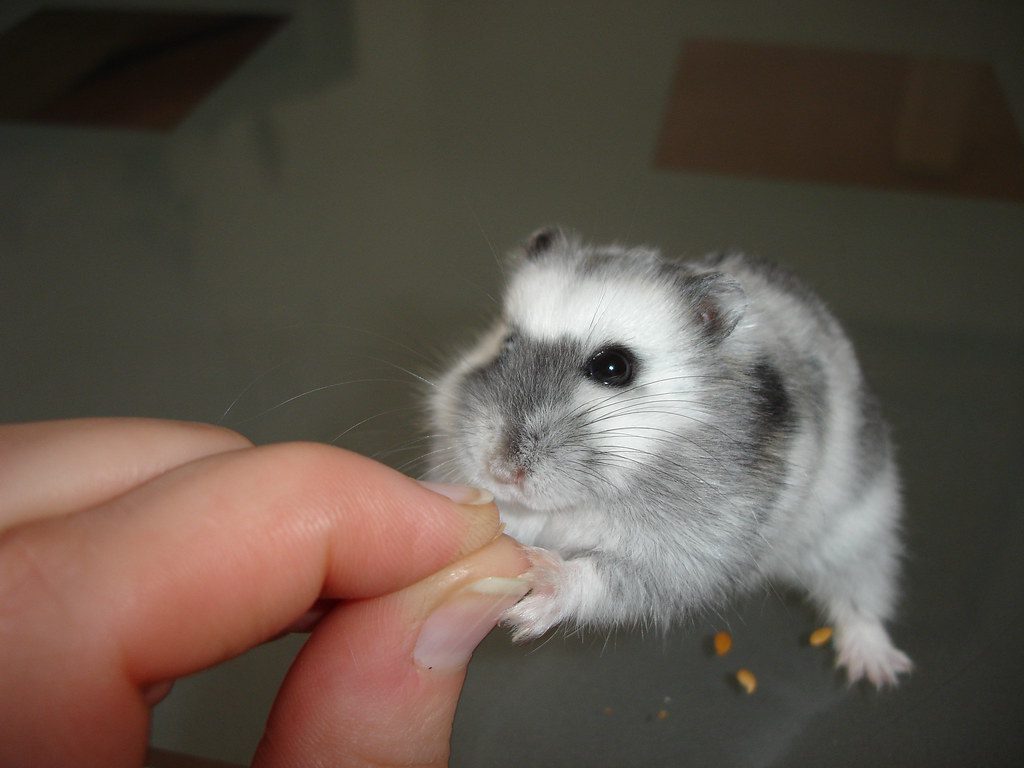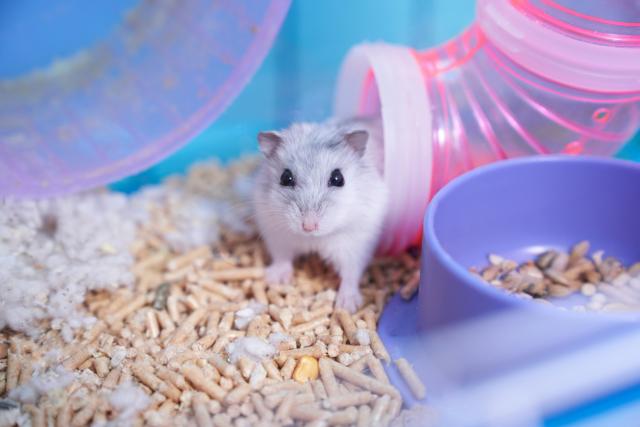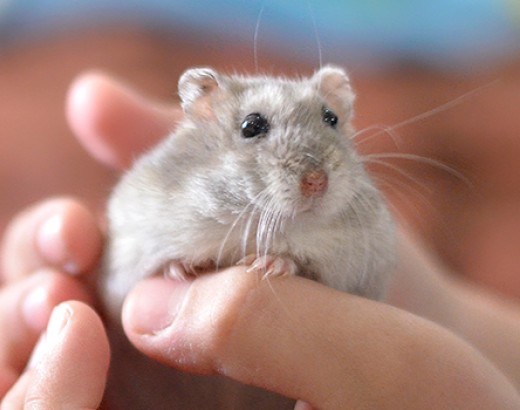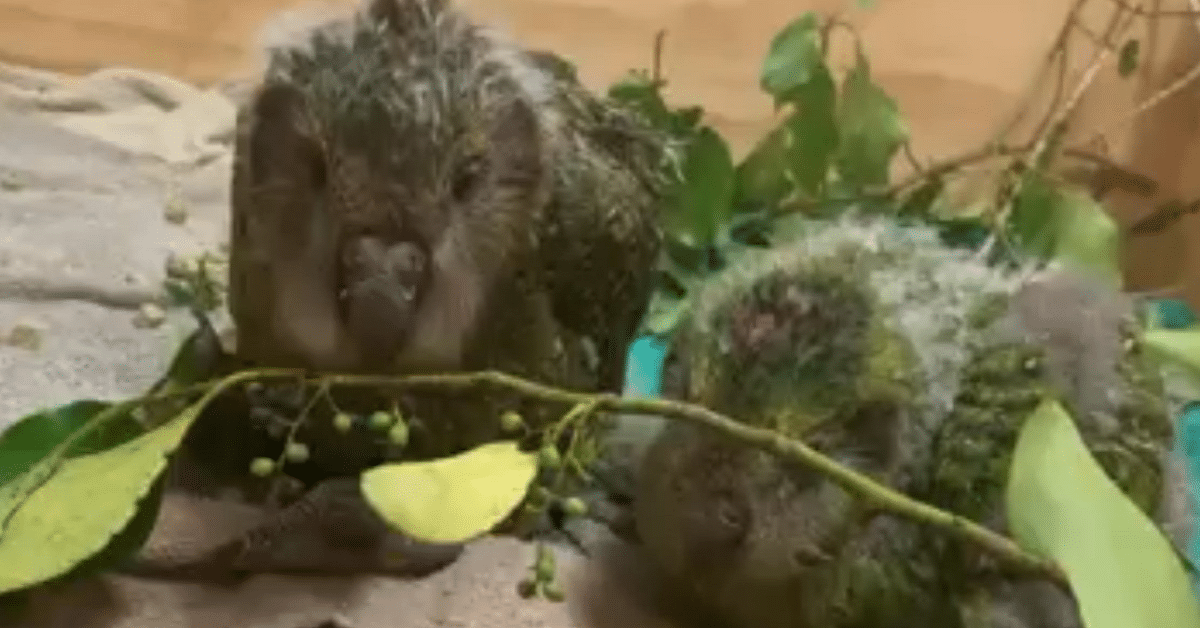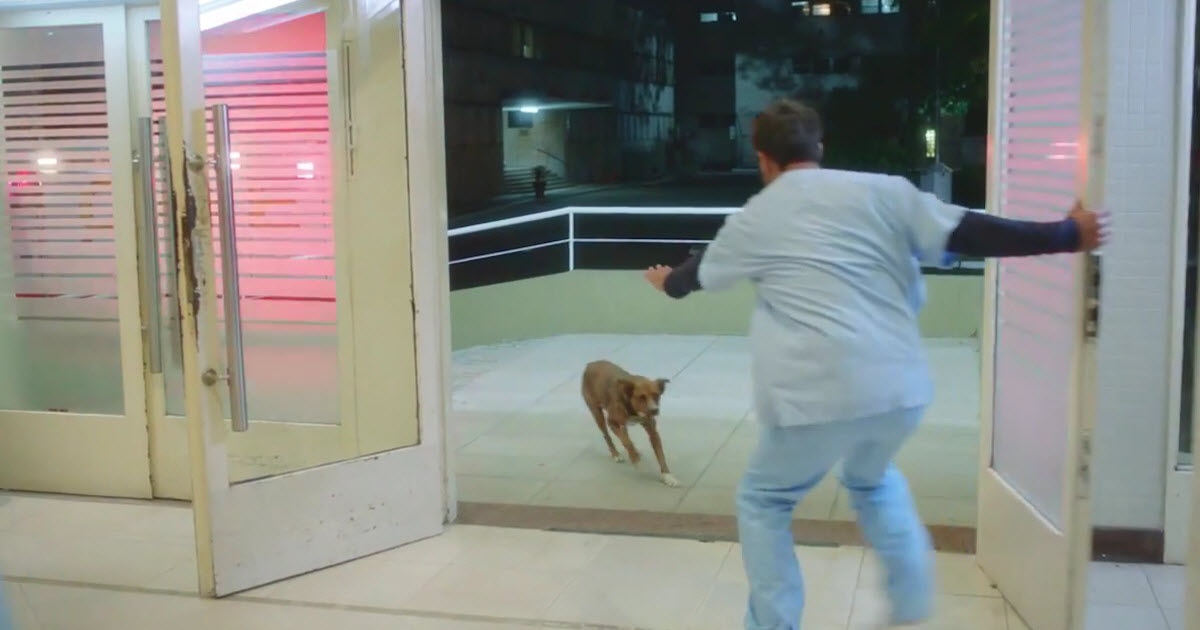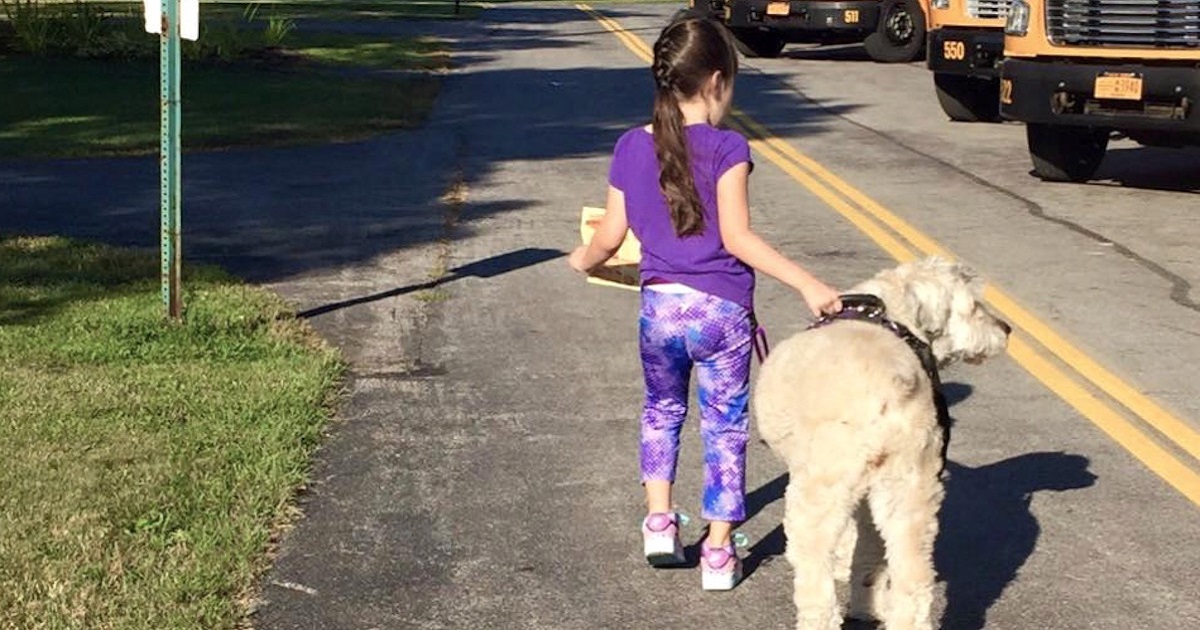So, are you looking for the perfect pet? Well, look no further than this Russian Dwarf Hamster. They make great companions, and these little guys are charming and will fit into most lifestyles easily.
This post will give you the scoop on everything you need to know about Russian Dwarf Hamsters, from their personality traits to their health and habitat requirements. So keep reading to learn more about these fascinating creatures!
Russian Dwarf Hamster or the Phodopus sungorus
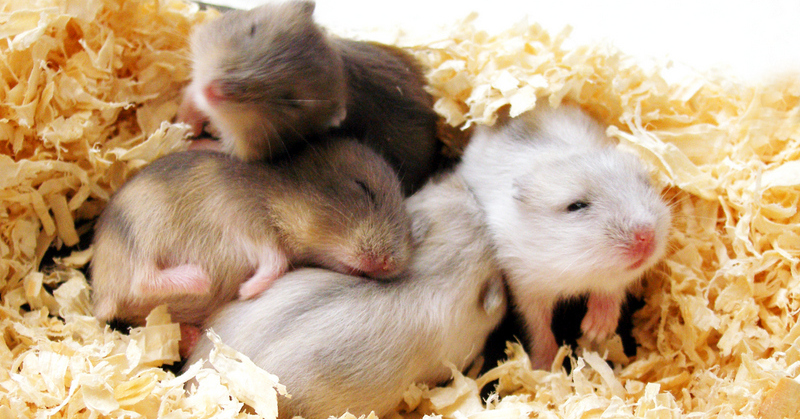
The name “Siberian Hamster” might sound like it refers to something that only lives in Russia, but this small furry animal can be found all over! They’re also known as winter whites (or simply ‘whites’), Djungarian hamsters, and hairy-footed dwarves. But despite their different names, they have one thing: a scientific classification of Phodopus Sungorus which means “blue tooth” among other things such as being able to chew on bones or burrowing into the sand at will.”
Suppose you see a winter white dwarf hamster with a possibly gray line going down its back known to be Russian dwarf-sized. In that case, this might seem strange, but in the winter months, when it’s dark outside, these little guys change colors and become almost apparent thanks to their natural lighting conditions. They can also be brown to gray. Dwarf hamsters grow to be just medium in size.
Other hamster varieties that exist but are less popular are: Roborovski hamsters, Djungarian hamsters, Chinese hamsters, Syrian hamsters, Siberian hamsters, Campbell’s dwarf hamsters & wide more varieties.
The Difference Between Russian Dwarf Hamster and Campbell’s Hamsters
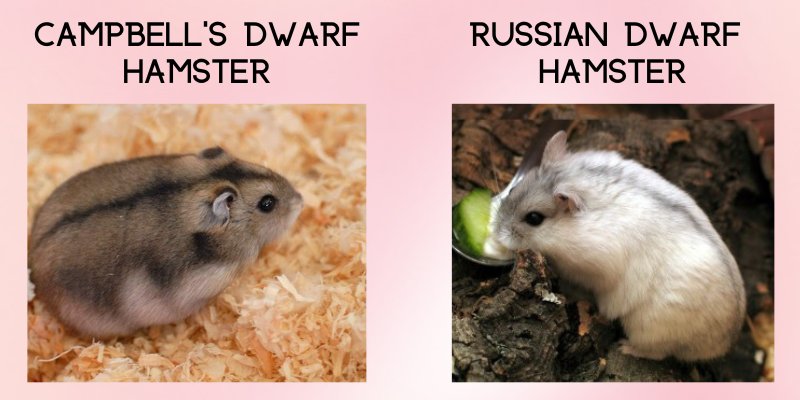
The Campbell’s dwarf hamster, like its cousin, the Russian Dwarf (or not), is a different breed with the scientific name Phodopus Campbelli. Campbell’s dwarf hamsters typically have a darker brownish coloring and do not change colors.
So now you know when a hamster is a Russian Dwarf and not. Keep reading to learn all about this adorable breed.
The History of Russian Dwarf Hamster
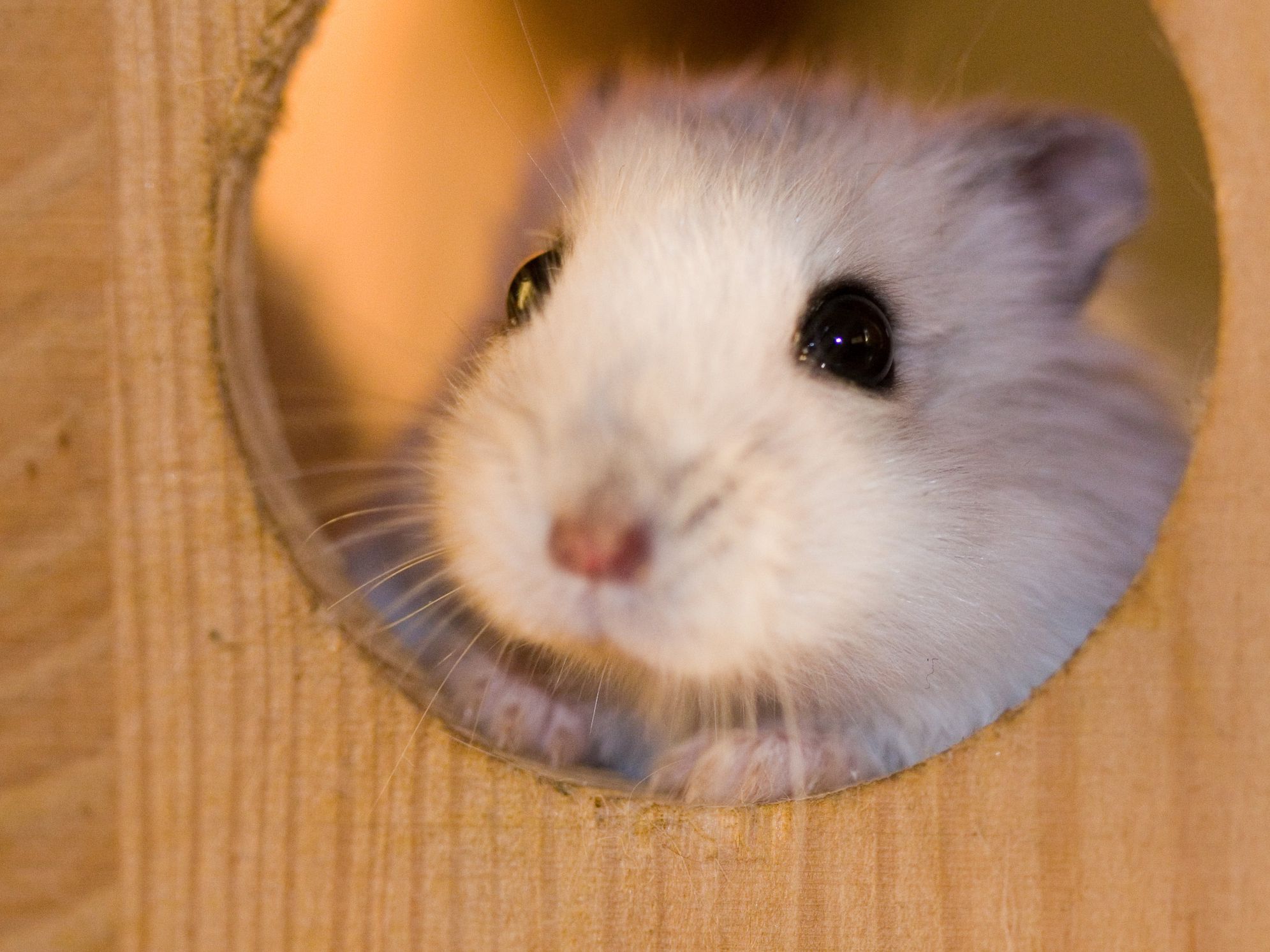
A furry little creature with an imported background, the Russian Dwarf Hamster, comes from wheat fields and meadows in Dzungaria. They can be found across China to Mongolia, where they live underground 1-meter deep through tunnels.
In winter, your pet’s natural color, brown, will help them blend in with their surroundings and avoid being eaten by predators. However, if you keep them indoors where there is plenty of artificial light, they may not be able to change colors as quickly due to the effect that too much white has on this process–making those stripes seem less distinct or even gone entirely.
Even though their numbers have decreased in recent years, you can still find these furry creatures throughout North America and Europe.
Facts
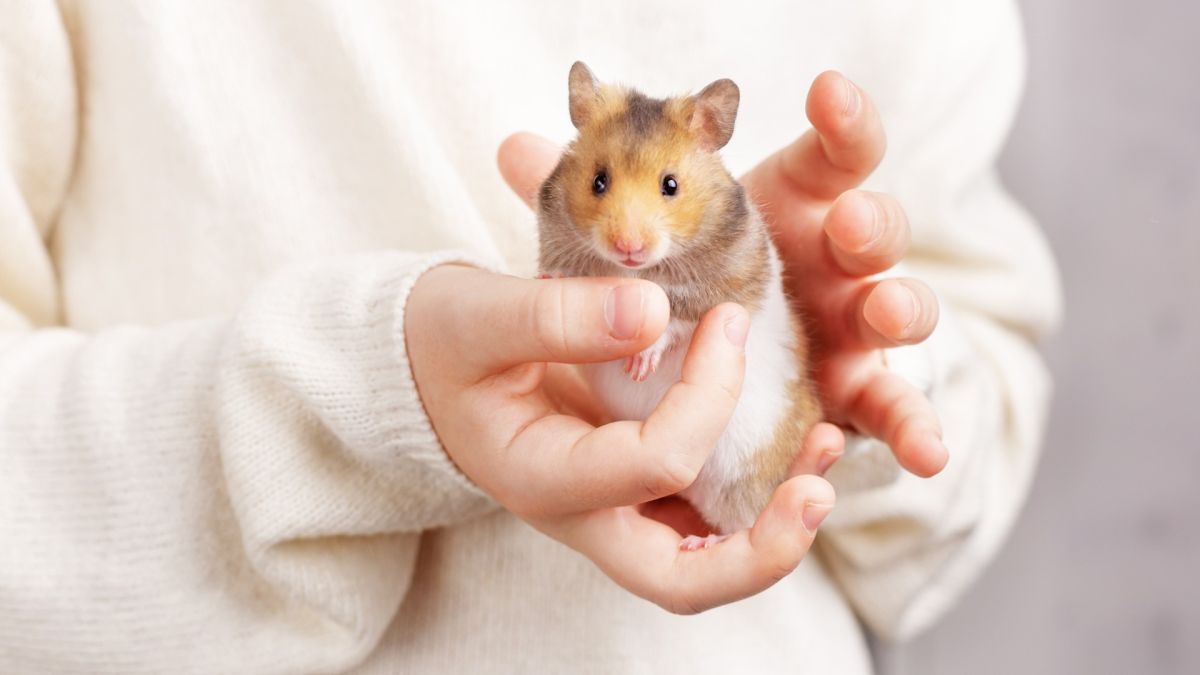
The Russian Dwarf Hamster is a small, adorable creature with an average size half that of its larger cousin, the Syrian. They are often thought to be cute and cuddly by many people comparison. They come from the genus phodopus, a lineage of small rodents native to central Asia. Phodopus species are great pets and can be found in most pet stores at a young age.
Hamsters are social creatures and will live to be about one or three years old, though they can go beyond that. When it comes down to the color issue – as in wintertime when these little guys may turn white before turning into an ash gray with brown markings all over–it gets tricky because hamsters come in many different shades.
The Russian Dwarf Hamster can come in various colors, including pale brown, and beyond that, they may even have pearl or sapphire-colored fur. But more importantly, when these small pet rodents are bred with Campbell’s dwarf, there is often an increase in color patterns seen throughout their bodies. Some have much darker fur than others, while winter white hamsters also exist. If you want a good pet, you might consider one of these little guys!
Habitat
Dwarf hamsters are small, furry creatures that can get away with living in smaller environments. They are comfortable in most cages, though a 20-gallon tank is most recommended for these adorable little guys. Choose pine shavings instead of cedar wood because they’re sensitive to it; don’t forget about plenty of toys and hiding places, too–you’ll need all sorts of things if you want your dwarfish friend happy (and not stressed). Hamster wheels help keep them exercised. A properly cleaned hamster cage is imperative.
To keep your Russian Dwarf Hamster happy, you’ll need a water bottle and ceramic food bowls. You can also get them some fun toys like paper towels or toilet roll tubes that they might enjoy exploring in their environment! Another essential part of caring for these little guys is cleaning up after them, so make sure to do this every week by removing any bedding material near the cage door where accidents may happen because it’s not always easy, seeing as how we humans tend to forget our weaknesses sometimes.
Cages
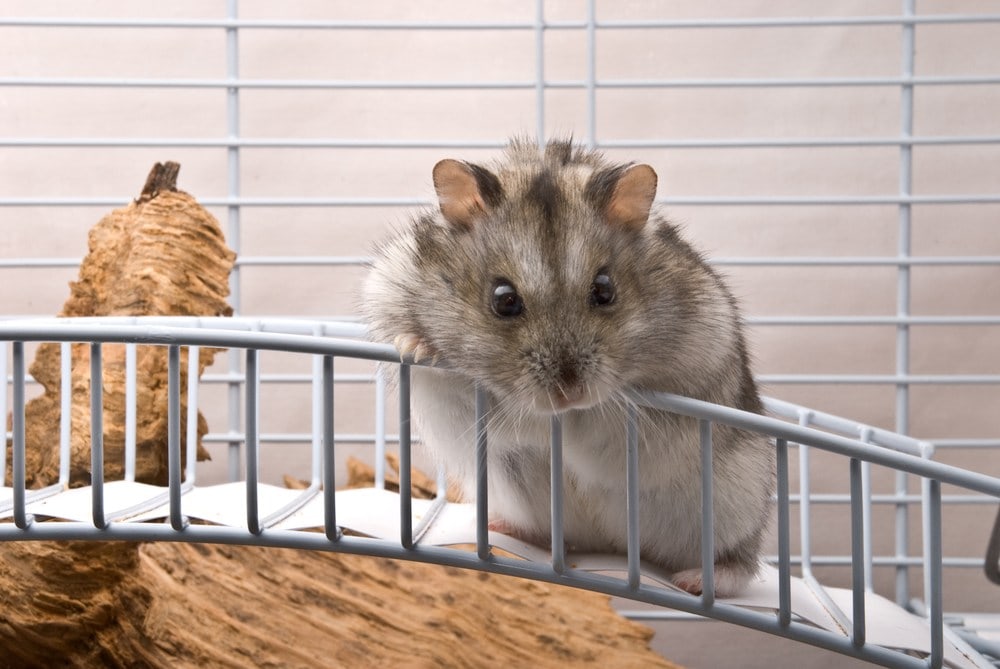
Dwarf hamsters are known for their love of digging and burrowing. A large wire enclosure will likely cause problems with these activities, as they can slip between wide wires or even swallow some to escape.
A glass aquarium is an excellent option to house your dwarf hamster. The safety of these animals comes first- ensure there are no gaps where they could climb out on their own before boarding them in tall cages with lids attached. Provide them a hamster wheel so they don’t get bored, and your hamsters will be satisfied over the long run.
Foods and Diet
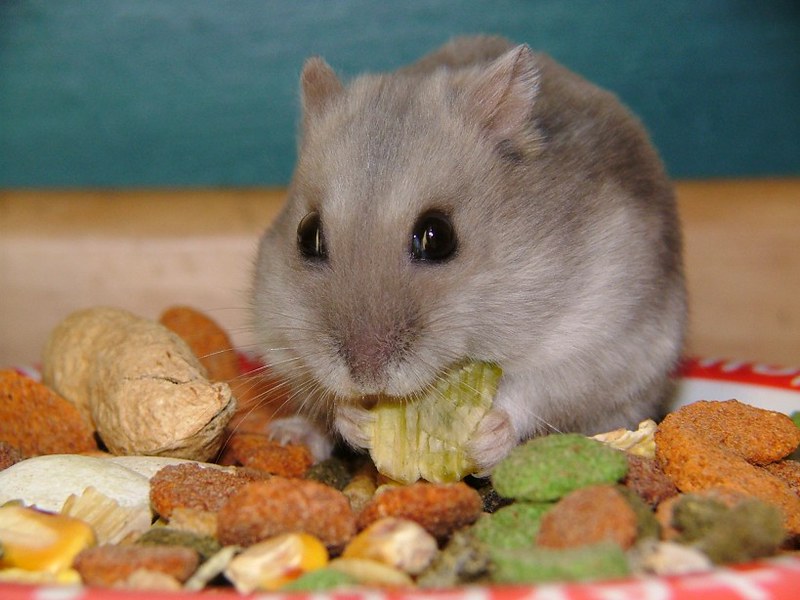
Hamster care begins with what you choose to feed them. Dwarf hamsters are natural foodies but need a balanced diet. They love eating anything from seeds to plants and insects. So if you want your pet happy, give them a good omnivore diet that includes plenty of fresh food, like vegetables – but avoid fresh fruits as much as possible because they’re actually toxic for these little guys.
Tasty treats for a Russian Dwarf Hamster
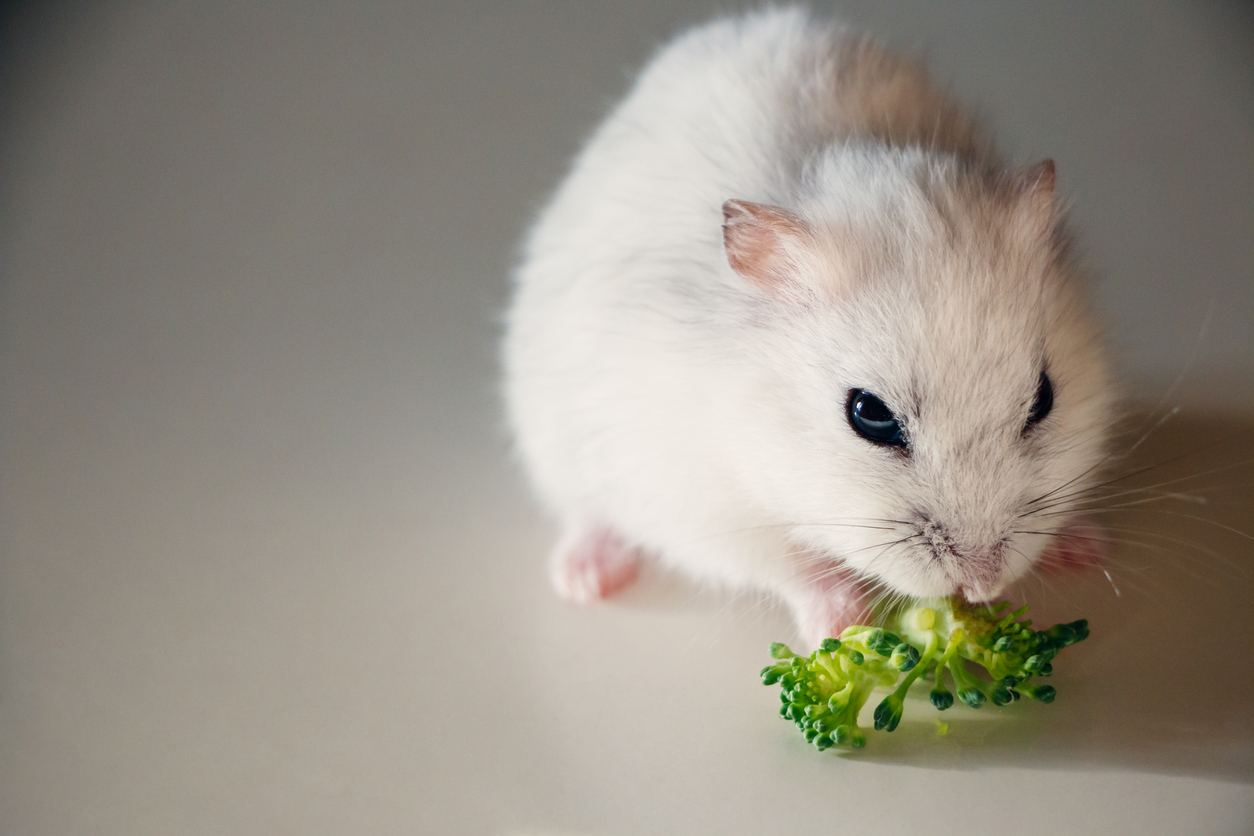
You can give seeds and vegetables as snacks, but greens should be kept to a minimum because they might cause digestive issues. Carrots are still popular, though.
Acadiana Veterinary Clinic provides a list of safe treats ideas:
- Plants and greens (like asparagus, basil, green beans, bell peppers, cucumbers, wheatgrass)
- Animal protein (like grasshoppers, crickets, small cooked meats like chicken and salmon)
- Nuts (like peanuts, walnuts, cashews)
- Seeds (like pumpkin, sesame, and sunflower)
- Oats
- Barley
It’s important to keep portion sizes tiny and natural for your hamster. Like other breeds, the Dwarf should only be given raisin size foodstuffs! These little guys love sticking their feed in their tiny cheeks and then depositing it around the cage so they can nest or have later snacks when needed.
Some Russian Dwarf Hamsters also enjoy salt or mineral licks as an occasional treat in their cage. Food won’t go rancid if you keep an eye out for these stashes while cleaning.
Personality
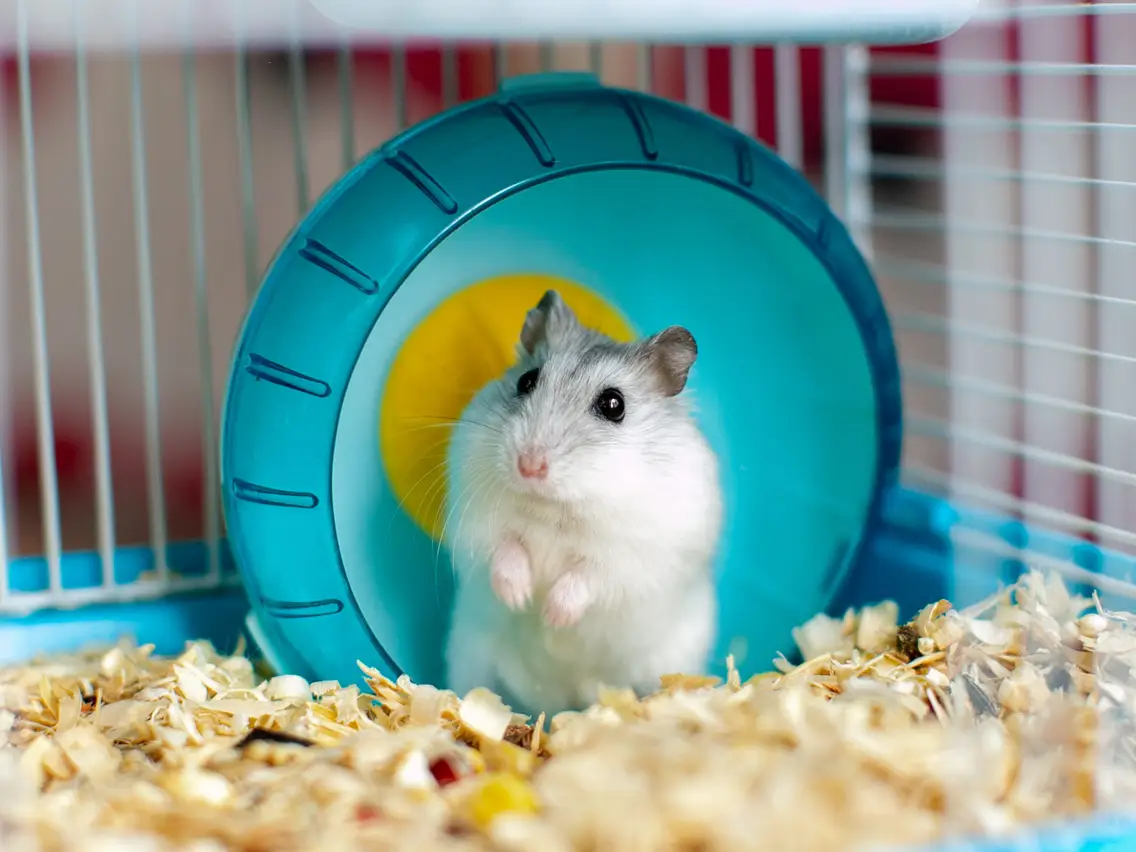
One great thing about Russian dwarf hamsters is that they are typically more active in their day than Syrian ones, who are more nocturnal. These fur balls can be found doing all sorts of crazy stuff at dawn and dusk, but chances are you’ll only see them during those times.
If you take the time to make games and obstacle courses, these little acrobats will entertain for hours with their antics. They also enjoy coming out of the cage and being put into an exercise ball, where they can run around your house. Just make sure they cannot get near a set of stairs. If you’d rather keep them confined to the cage, just ensure they have an exercise wheel available, as they need to blow off steam just like other species.
The Dwarf hamster has excellent eyesight but is nearsighted and can’t see well in bright daylight. Make sure to talk before grabbing one so they know you’re there, because they will bite if you’re not careful! Letting them know someone is nearby may also reduce the chance of bites, so be polite when handling these little guys or other hamsters.
Gently scoop up your hamster and then cup the hands around him, or he will fall. Try for daily gentle interaction so you can get used to holding him. Hamsters are good pets who enjoy older children and adults for socialization. They are easy pets to have due to their small size and the fact they require a little less maintenance than a dog, for example.
Keeping in Pairs and Groups
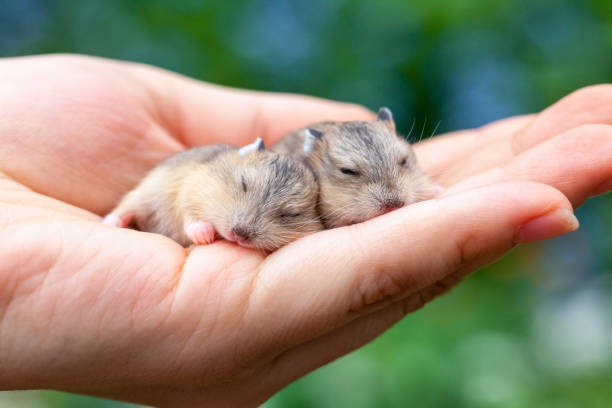
Hamsters are social creatures who like the company of their kind, so if you want to get more than one Dwarf Hamster, it is best to have them in small groups. It’s also vital that they’re from either the same litter or introduced at an early age. People often swear that hamsters need to be in same-sex pairs because of their temperament and to ensure you aren’t breeding an unexpected litter of more hamsters. Regularly check to ensure any hamsters you put together are getting along with each other.
Though it is not always easy, Introducing new hamsters into your home can be a great experience. If you want two adult females or males, use clean cages with bleach and fresh bedding as they will need space to explore while adjusting themselves in this foreign environment without fear of attack from other animals that may belong at different ends of their ranges.
Hamsters are social creatures who need company, so sprinkling seeds around the cage will keep them distracted until their fear has subsided. If you notice any fighting or problem-hamster situations (i.e., littermates), then take steps to separate these individuals before things worsen.
Health
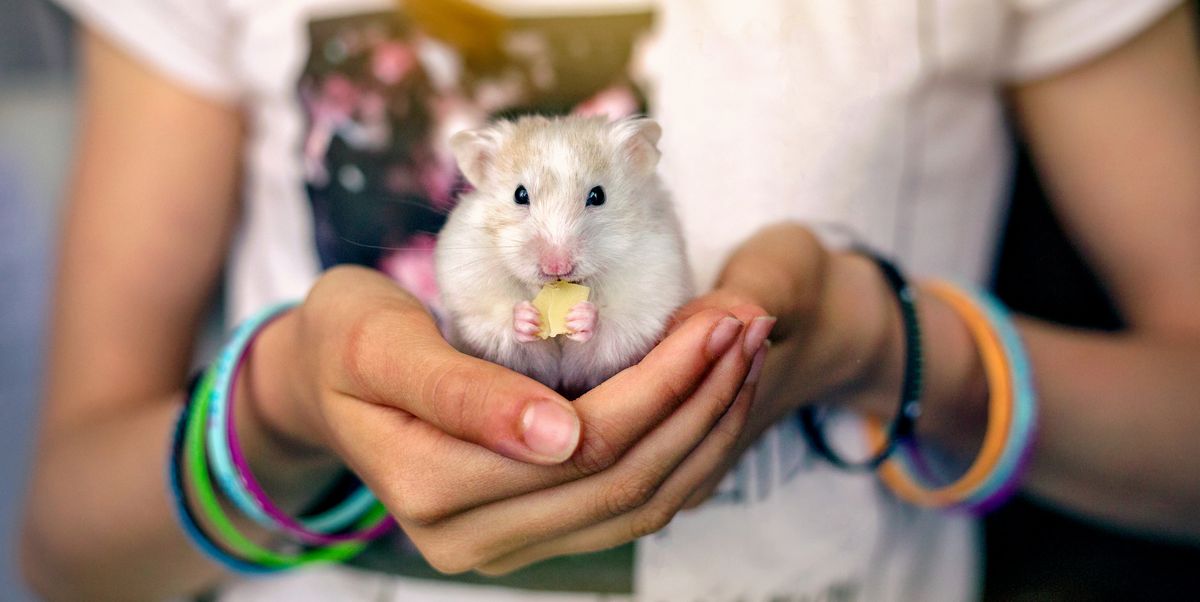
Hamsters are fun animals to have as pets but can also be prone to health issues. Knowing what you should look out for and when your hamster needs veterinary care will help them get back on their feet more quickly. Keeping them on a staple diet will ensure their health over the long run!
Losing Fur
Hamsters can develop several causes for their fur loss, from friction to B vitamin deficiency. If you notice your pet is experiencing thinning or bald patches on its body, please contact an animal doctor so they may determine what’s wrong and how to treat it.
Colds
Hamsters are just like us in that they can catch a cold. If your hamster suddenly becomes sniffly and lethargic, has runny eyes, or goes off his food, he may have seen one.
First, check with a vet if it’s not something more severe. After that, you should clean out the cage and disinfect any cold germs before moving him to his new home so he can recover adequately.
Wet Tail
Hamsters who contract wet tails will suffer from severe diarrhea, which may be fatal! Ensure you know the signs so your pet can receive vet care quickly.
Dental Issues
Hamsters have a teeth growth cycle that lasts their entire lives, so it’s essential to ensure they are chewing on something regularly. Overgrown or struggling with drooling might be signs of an issue related to dental health, and you should always receive care from your vet immediately if noticed.
What distinguishes the Russian Dwarf Hamster from other hamster breeds?
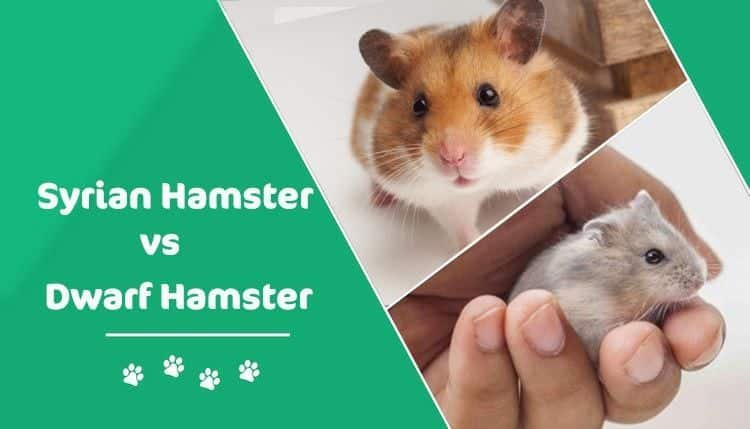
You may wonder which one to choose with so many pet hamster breeds. We’ve got a detailed comparison of all the domestic ones right here.
We’ll check how these various hamster breeds match up to Russian dwarf hamsters right now.
Are Russian Dwarf Hamsters the most adorable hamster breed?
Maybe. He’s not as big or small as the other two hamsters; he sits around 3 to 4 inches. Roborovski is an excellent “mid-range” size between Syrian and Chinese breeders.
What is the friendliest hamster breed?
The Russian Hamster is the nicest of all hamsters. They’re typically sweet and gentle with humans, making them one-of-a-kind. They make tame pets who do not mind captivity, as long as they have things like an exercise ball or exercise wheel to keep them physically stimulated.
Your relationship with your hamster determines how friendly they are. Some breeds, like the Russian Dwarf Hamsters, will be happier if given lots of human interaction and loved ones. At the same time, other small pet owners might find that their little furry friend becomes aggressive when neglected or mistreated by its owner. Like all animals, love and affection is never wasted on these little pets.
Conclusion: Russian Dwarf Hamster
The Russian Hamster is a perfect choice for those with limited living space. They don’t require unusual or exotic care, and their friendly dispositions make them one of the best pets.
Interacting with your pet is an integral part of their day and will make them happy. Make sure you give him lots of love, attention, and playtime to feel confident around people.
FAQS (FREQUENTLY ASKED QUESTIONS)
Q: Are Russian Dwarf hamsters friendly?
The Dwarf Winter White Russian Hamster is a friendly breed that enjoys being handled, tolerates being picked up, and makes for an excellent pet with supervision around small children.
Q: How long do Russian Dwarf hamsters live as a pet?
A: The lifespan of a Chinese dwarf hamster is typically three years, but it can be as short as two if you do not provide them with proper care. Russian and Roborovski tend to live only two due partly to their fragile health, which means they need extra attention from humans like us who own these little guys.
Q: Are Russian and dwarf hamsters the same?
A: Winter white dwarf hamsters, also known as Russian dwarf hamsters, are a small, social species with an easygoing personality. They’re not as quick on their feet, but they do well in handling and enjoy more cuddles from humans than most other types of pets.
Q: How much is a Russian dwarf hamster?
A: You can expect to pay between $15 and $ 25, though this varies based on age or color. When deciding which pet you want, your hamster must have bright eyes with a shiny coat; its tail should be clean/dry too.
Q: What is the nicest dwarf hamster breed?
A: Roborovski Dwarf Hamsters are a friendly, social breed that typically grows to 1-2 inches long and weighs 20 grams. Like other dwarfs in their class (they’re called “dwarfs” for a good reason), these guys live three years with proper care.

